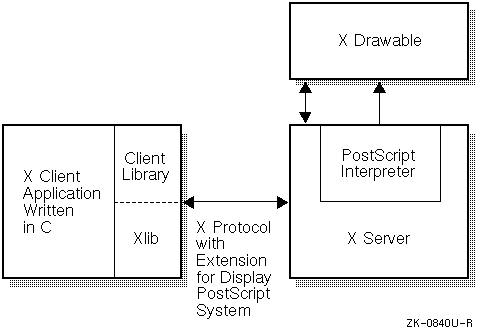To display or print graphics, an application must have an imaging model, a set of rules for describing pictures and text. One of the most popular imaging models is that of the PostScript page-description language, from Adobe Systems, Inc. Originally developed for hardcopy output devices, such as laser printers, the PostScript language imaging model has been adapted for bitmap displays through Adobe's Display PostScript system.
Digital's .nt Worksystem Software (WS) implements the imaging models of the X Window System and the Display PostScript system. WS applications can mix X and PostScript language imaging calls, even within a single window, using a single network connection to an X server. This manual introduces the Display PostScript system and shows how to develop WS applications that use it.
The Display PostScript system is software that extends the PostScript imaging model to bitmap display systems. With the Display PostScript system, you can design and write applications in a general-purpose language like C, yet describe their images and text using the device-independent PostScript imaging model.
You are probably familiar with the capabilities of X imaging. The following capabilities are found in PostScript language imaging but not in X imaging:
The Display PostScript system is a system-independent client/server architecture that can be implemented on a variety of windowing systems. In this architecture, the server consists mainly of a PostScript interpreter, which executes PostScript language code that displays images on a user's screen. The client is an application that communicates with the server through a set of routines known as the Client Library.
WS implements the Display PostScript system as an extension to the X Window System, on which WS is based. The Display PostScript system server is an extension to the X server; the Client Library is an extension to Xlib. The Display PostScript system extension of WS lets a C language application display images in an X window by calling functions that send PostScript language code.
Figure 1-1 shows the WS implementation of the Display PostScript system. (For brevity, this manual often refers to this implementation as XDPS.) For more information about how WS implements the Display PostScript system, see Chapter 2.

To understand and use the Display PostScript system in WS, you must be familiar with these subjects:
This manual describes mainly the WS-specific aspects of the Display PostScript system.